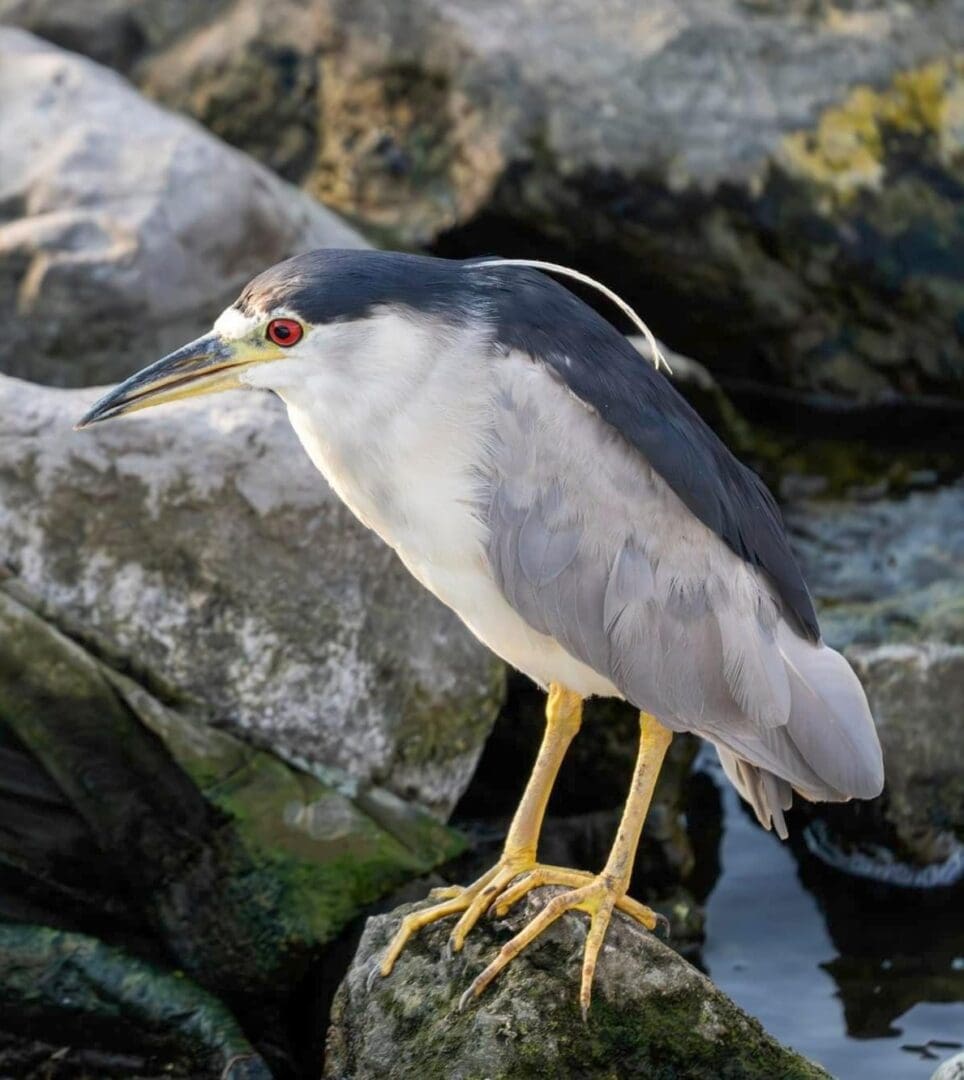The Black-crowned Night Heron

WHAT STOCKY WETLANDS PARK BIRD APPEARS SLUGGISH AND LISTLESS BY DAY AND ACTIVE AND “GHOSTLY” BY NIGHT?
During the daylight hours, it may take a second look or two to locate and identify a black-crowned night heron (Nycticorax nycticorax) perched in the cottonwood or mesquite trees or roosting areas found in the riparian parts of Clark County Wetlands Park. The reason is that these compact, water-loving birds typically roost until dusk, at which time they fly out of the trees to forage, almost “croaking or barking” as they pass high overhead in the darkness. Black-crowns thrive in fresh, salt, and brackish wetlands and are the most widespread heron in the world.
Unlike their long-limbed cousins, black-crowned night herons have sturdy, heavy bodies like mallards. Adults are unmistakable with black caps and backs, and gray wings. Juvenile birds look very different, with all brown and white spots at first. As they mature, the young look like browner versions of the adults.
Black-crowns are social birds that nest in groves of trees or thickets or water-surrounded islands of cattails, etc. with other water-loving birds to avoid predators. When approached in their nests, the birds tend to disgorge their stomachs, giving off a smelly odor to deter their visitor. Because their necks are short, they appear stocky and “hunchbacked.” Studies also have suggested that they adopted a nighttime foraging pattern to stay clear of their competition: egrets, ibises, and other herons. At the Park, most of the black-crowned birds are full-time residents.
During breeding season, males look for a safe place to nest in the cattails or trees in a colony with other birds and begins to build a nest. Then they advertise for females by stretching their necks long, ruffling up their feathers, bowing, and raising long plumes on top of their head!
When the females arrive, the birds bond monogamously. The females pick up the building of their nest, with the males passing the building materials to them. Female black-crowns will lay three to four greenish blue eggs at a time. Night-heron pairs will brood other eggs that are placed in their nests. Both males and females participate in the nesting/brooding period. Partners will alert their spouses with a call and the raising of body feathers when they switch duties. During breeding season, the adults will expand their nocturnal eating habit to include eating during the daylight hours for the extra energy needed for nesting.
Both parents will feed their young nestlings. The young will leave their nest in about a month, though they will not be able to fly for another two weeks. The youngsters start by foraging on foot at night, returning with others to their roosting colony before sunrise. Colonies in trees or thickets have been known to last 50 years or more!
Black-crowned night herons aren’t fussy eaters. They eat leeches, earthworms, insects, crayfish, clams, mussels, fish, amphibians, lizards, snakes, turtles, rodents, birds, and eggs. They also will eat carrion, plant material, and unfortunately garbage.
Black-crowned night herons clearly are well adapted for the Park’s challenging environment, featuring cold winters and extremely hot summers. Hope you’re able to spot one—or more—on your next trek through the Park.
– By Constance Carlson, Director of Communications; photo by Thane Webb
Please enjoy these YouTube videos:
Wildlife Feature | Black-crowned Night-Heron
Black-Crowned Night Heron with Call Sound
Black-crowned Night Heron struggles with a big fish
